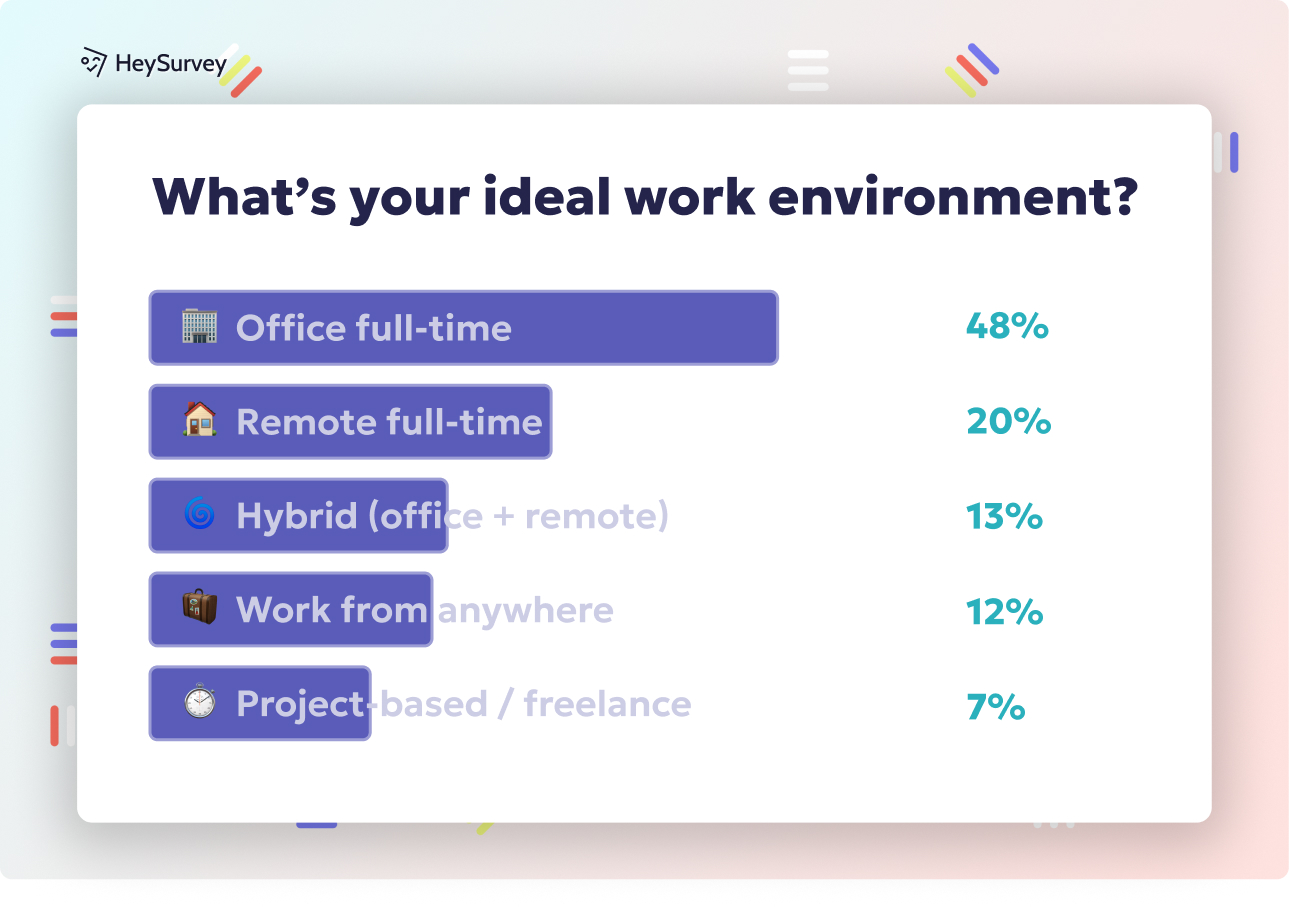31 Team Collaboration Survey Questions: Types & Proven Templates
Explore 28 proven team collaboration survey questions, templates, and tips to boost teamwork, communication, and productivity across any team.
Team collaboration is the secret sauce behind today’s most innovative, high-performing companies. When teams truly click, businesses experience faster innovation, happier employees, and higher retention. But collaboration isn’t always easy. Issues like information silos, duplicated work, and unclear ownership can tangle even the best groups. That’s where thoughtfully crafted surveys come in—they reveal hidden roadblocks, measure what matters, and guide real improvement. Get ready to dive into eight versatile survey types, complete with proven question templates and best-practice tips you can grab and use today.
General Team Dynamics Survey
Why Team Dynamics Matter
Every strong team starts with the basics. A general team dynamics survey is your pulse-check on how well your team works together day-to-day. Without this baseline knowledge, you’re only guessing at your team's real strengths and weaknesses.
It’s great to use these surveys after new teams form, post-project, or even quarterly to monitor shifts in your team’s culture. Each stage offers a chance to take stock, notice positive changes, or catch early warning signs of trouble.
Common Insights and Uses
Teams often grab a dynamics survey to:
- Spot morale dips before they snowball
- Uncover hidden obstacles to teamwork
- Celebrate wins and nurture camaraderie
Don’t be surprised if you find recurring issues like “too many meetings” or “unclear goals.” That’s the gold—those roadblocks are now visible and fixable.
Sample Questions for Team Dynamics
Use these ready-to-copy questions for any team pulse:
On a scale of 1–10, how effectively does our team collaborate to reach shared goals?
I feel my ideas are valued by the team.
What is the biggest obstacle preventing smoother collaboration?
We celebrate wins together as a team.
Rate the overall sense of camaraderie within the team.
Keep it fresh by blending ratings, open-ended prompts, and agree/disagree statements. Always close with gratitude and a note about next steps—survey fatigue is real!
A well-structured team collaboration survey can uncover hidden obstacles, enhance communication, and boost overall team effectiveness. (jotform.com)
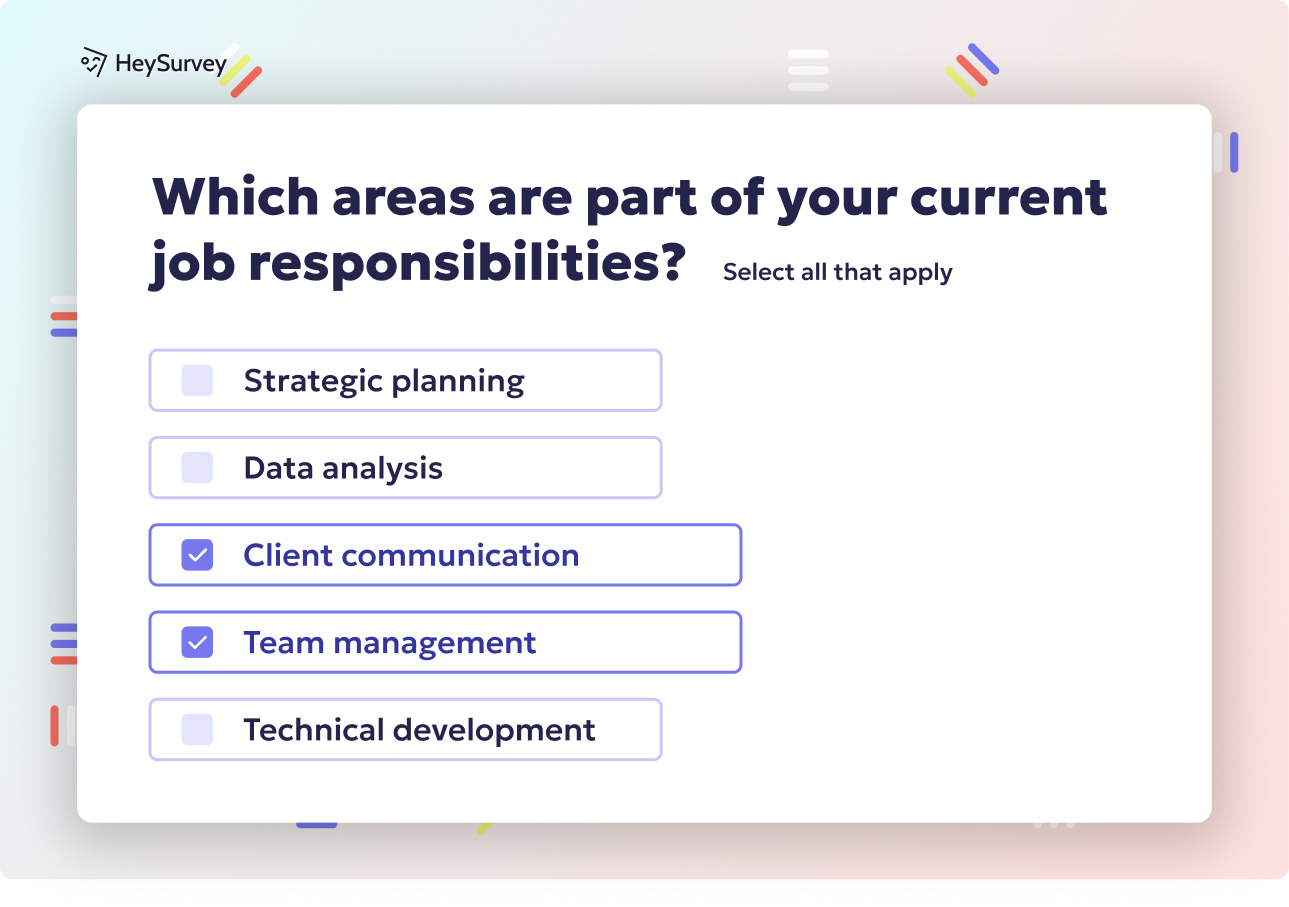
How to Create Your Team Collaboration Survey with HeySurvey in 3 Easy Steps
If you’re new to HeySurvey, here’s a simple, bite-sized guide to get your team collaboration survey up and running—no rocket science required!
Step 1: Create a New Survey
Start by logging into HeySurvey or diving right in without an account to explore.
Choose “Create Survey” from the dashboard.
Pick a pre-built team collaboration survey template for a head start or select an empty sheet if you want full customization.
Give your survey a clear internal name, like “Team Collaboration Pulse – Q2 2024,” so you can easily spot it later.
Step 2: Add Your Questions
Click “Add Question” at the top or between existing questions in the Survey Editor.
Choose question types that match the format you want: Likert scales, ratings, open-ended text, or agree/disagree statements.
Enter your collaboration-specific questions—feel free to plug in the sample questions from your article section.
Mark those must-answer questions as required to ensure crucial insights don’t slip through the cracks.
Want to spice things up? Add images, descriptions, or apply markdown to format your questions for clarity and engagement.
Step 3: Publish & Share Your Survey
Once your questions are set, hit the Preview button to see it from your team’s perspective.
Go to the Settings Panel to adjust when the survey launches or closes, set response limits, and decide if respondents see results.
When everything looks golden, click Publish to generate a sharable link or get the embed code for your intranet or team portal.
Share it via email, chat, or project platforms and keep an eye on responses as they come in!
Bonus Steps to Make Your Survey Shine
Apply Branding
Upload your team or company logo to make the survey feel like an official team check-in, boosting response rates and trust.Define Advanced Settings
Set start and end dates to control survey availability, enable anonymity to encourage honesty, or add a redirect URL that sends respondents to a thank-you page or next steps.Skip Logic & Branching
Use branching to tailor questions based on previous answers—for example, skip role clarity questions if a respondent is not involved in decision-making tasks—making the experience more relevant and quicker.
Ready to see it in action? Just hit the button below to open a ready-made template and start customizing your own team collaboration survey in HeySurvey today!
Communication Effectiveness Survey
Unlock Better Team Conversations
Crystal clear communication is the backbone of high-performing teams. A communication effectiveness survey helps you understand if messages land, meetings matter, and everyone’s voice gets heard. Without good comms, even the best strategies flop—nobody likes unexpected surprises.
Switching collaboration tools, merging teams, or just dealing with missed deadlines? That’s the cue to break out a comms survey. It identifies where breakdowns happen and how to fix them before they spiral.
Where Gaps Become Opportunities
You’ll quickly spot:
- Bottlenecks caused by unclear channels or overused meetings
- Frustrations with late or missing information
- Ideas for fine-tuning how teams talk—synchronously or asynchronously
Teams doing this regularly often notice less confusion, sharper meetings, and faster project delivery.
Sample Questions for Communication
Keep your comms survey succinct and direct. Try these:
Information I need to do my job is shared in a timely manner.
Our meetings are efficient and outcome-focused.
Preferred channels (chat, email, meetings) are respected by teammates.
How often do communication breakdowns impact project delivery?
Suggest one change that would improve team communication.
By asking about both processes and personal experiences, you’ll spot quick wins and deeper cultural shifts worth tracking.
Clarity of team norms is a stronger predictor of software developers' self-assessed performance and job satisfaction than psychological safety. (arxiv.org)
Role Clarity & Responsibility Survey
The Power of Knowing Who Does What
Nothing bogs down a project like confusion about who owns what. Role clarity surveys sweep away misunderstandings and keep your team running like a well-oiled machine. When everyone knows their role, work gets done faster and ownership is clear.
These are crucial during periods of change—think shifting responsibilities, company reorganization, or anytime double-work creeps in unexpectedly.
Pinpointing Overlaps and Gaps
Expect to discover:
- Hidden duplicates or overlaps causing friction
- Missing documentation leading to confusion
- Strengths in decision-making clarity
Teams that routinely ask about roles surface issues before they become massive headaches. Plus, it’s pretty satisfying when job scopes match reality.
Sample Questions for Role Clarity
Anchor your survey with these practical questions:
I understand how my tasks contribute to overall project objectives.
Roles and responsibilities are clearly documented and accessible.
Describe any areas where responsibilities overlap or are unclear.
I know who has decision-making authority for key deliverables.
Rating: confidence in my current job scope (1–10).
When in doubt, always request examples or comments—real stories spark the richest insights.
Psychological Safety Survey
Fostering a Culture of Openness
Where trust goes, innovation follows. A psychological safety survey measures how free people feel to speak their minds, take risks, and share wild ideas. Fear is the enemy of creativity, and this survey shines a light on team culture.
Run this when innovation stalls, after tough feedback cycles, or if annual engagement surveys signal trouble with authenticity or candor.
Measuring True Safety
With these surveys, you’ll surface:
- Whether admitting mistakes feels safe
- How openly diverse viewpoints are welcomed
- Confidence in discussing unpopular opinions
Teams with high psychological safety see more learning, fewer mistakes swept under the rug, and braver ideas at every level.
Sample Questions for Psychological Safety
Borrow these for your next check-in:
I feel safe admitting mistakes to my teammates.
Diverse viewpoints are genuinely welcomed during discussions.
How comfortable are you challenging the status quo?
Team members respond constructively to critique.
Share an example where you felt safe—or unsafe—voicing an opinion.
Asking for stories or examples is a shortcut to unpacking subtle, but game-changing, team dynamics.
Psychological safety enhances team performance by fostering open communication and collaboration, leading to increased innovation and effectiveness. (pmc.ncbi.nlm.nih.gov)
Decision-Making & Conflict Resolution Survey
Making Decisions That Stick
If meetings drag on and decisions bounce around endlessly, it’s time for a decision-making and conflict resolution survey. This survey aims to streamline how your team makes choices and deals with disagreements—because friction should build energy, not block it.
Deploy after leadership changes, governance tweaks, or any time conflict is stalling progress.
Shedding Light on Process Pains
Expect feedback like:
- Confusion about who ultimately decides
- Delays because of conflict avoidance
- Uneven fairness in decision-making processes
A great survey uncovers both bottlenecks and bright spots—places where your team cracks tough choices quickly and fairly.
Sample Questions for Decision-Making & Conflict
Try these for actionable insights:
Our team has a clear process for making timely decisions.
Conflicts are addressed promptly and respectfully.
I know where to escalate unresolved disagreements.
Rate the fairness of our decision-making process.
What improvement could make decision-making smoother?
Mix direct questions with open-ended requests for solutions. You’ll get both clarity and practical ideas for your next upgrade.
Cross-Functional Collaboration Survey
Breaking Down the Departmental Barriers
Cross-team work can feel like a game of telephone—messages twist and priorities get tangled. A cross-functional collaboration survey cuts through the confusion, helping spot where workflow and goals align (or clash).
Use after starting matrix projects, launching multi-department KPIs, or when cross-team friction starts derailing efforts.
Where Collaboration Thrives (or Fails)
Look for patterns around:
- Delays from slow external responses
- Knowledge-hoarding habits across departments
- Team alignment on shared objectives
Identifying these sticking points can transform silos into highways of collaboration.
Sample Questions for Cross-Functional Collaboration
Start the dialogue with these:
External teams respond promptly to our requests.
Goals between departments are aligned and transparent.
Knowledge is shared openly across functions.
Rate the ease of working with other departments.
Identify one barrier to better cross-team collaboration.
Encouraging honesty—especially about barriers—leads to surprising breakthroughs and cross-pollination.
Remote & Hybrid Collaboration Survey
Thriving in a Distributed World
Hybrid and remote work are here to stay, but collaboration looks different over screens. A remote and hybrid collaboration survey checks if everyone—even those working in pajamas—feels included, equipped, and engaged.
Deploy this after moving to remote-first work or when noticing participation drops in virtual meetings.
Common Frictions and Fixes
Be sure to uncover:
- Gaps in access to digital tools
- Feelings of loneliness or disconnection
- Unspoken frustration with hybrid meeting norms
When teams tweak their approaches based on real feedback, remote work feels less isolating and more productive.
Sample Questions for Remote Collaboration
Gauge your team’s remote readiness:
Virtual meetings enable equal participation from remote and onsite members.
I have the digital tools needed to collaborate effectively from my location.
Loneliness or isolation hinder my teamwork.
How satisfied are you with our current hybrid collaboration norms?
Suggest one action to improve remote collaboration.
Don’t forget to act on what you hear—remote folks notice when their voices actually drive change.
Tools & Process Satisfaction Survey
Supercharging Team Workflows
Great tools and smooth processes are invisible when they work—and painfully obvious when they don’t. The tools and process satisfaction survey reveals what’s boosting productivity (and what’s driving teams to distraction).
Ideal before renewing software, onboarding a new platform, or debugging workflow delays.
Finding Out What Truly Clicks
Typical findings include:
- Missing integrations or clunky manual processes
- Underused software due to poor training
- Burnout from tools that add, not subtract, friction
Learning these truths can spark game-changing upgrades that make every project smoother.
Sample Questions for Tools & Processes
Fill gaps and boost workflow satisfaction with:
Our collaboration tools integrate seamlessly with daily workflows.
Rate your satisfaction with our primary project management software.
Manual processes cause delays in project delivery.
We receive adequate training on new collaboration tools.
Which tool or process should we retire or replace?
Posing specific and open-ended questions gets you actionable, not just theoretical, feedback.
Best Practices: Dos and Don’ts for Team Collaboration Surveys
Setting Your Survey Up for Success
Designing a team collaboration survey isn’t just about clever questions—it’s about creating trust and getting results fast. Use these dos and don’ts to get the most honest, helpful input from your crew.
Dos:
Do keep surveys under 10 minutes for higher completion rates.
Do blend quantitative (Likert, rating) and qualitative (open-ended) questions for balanced insights.
Do communicate next steps and act on feedback quickly, so people feel heard.
Don’ts:
Don’t ask leading or double-barreled questions that skew answers.
Don’t ignore anonymity—guaranteeing privacy fuels candid responses.
Don’t overload teams with too many surveys or ask too frequently.
A well-designed survey gives you credible, actionable data—not just noise. Pair every survey with a plan for sharing results and showing what’s changing. The follow-up is just as important as the questions themselves!
Ready to take your team’s pulse? Download a ready-made survey template or kick off your first pilot survey next quarter—real collaboration breakthroughs are just a few smart questions away.
Related Employee Survey Surveys
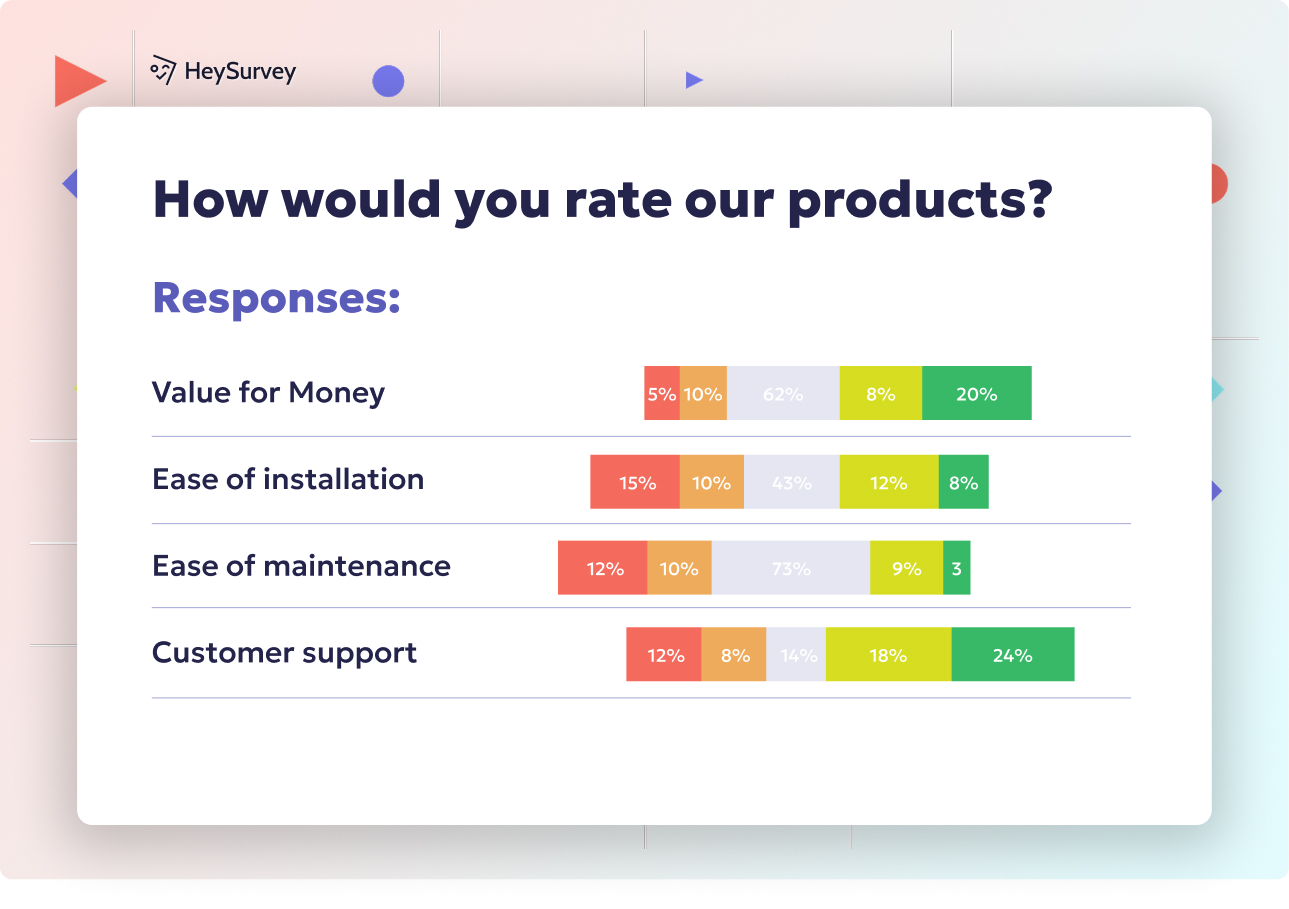
29 Essential Post Mortem Survey Questions for Project Success
Discover 25+ essential post mortem survey questions to improve projects, boost team morale, and d...
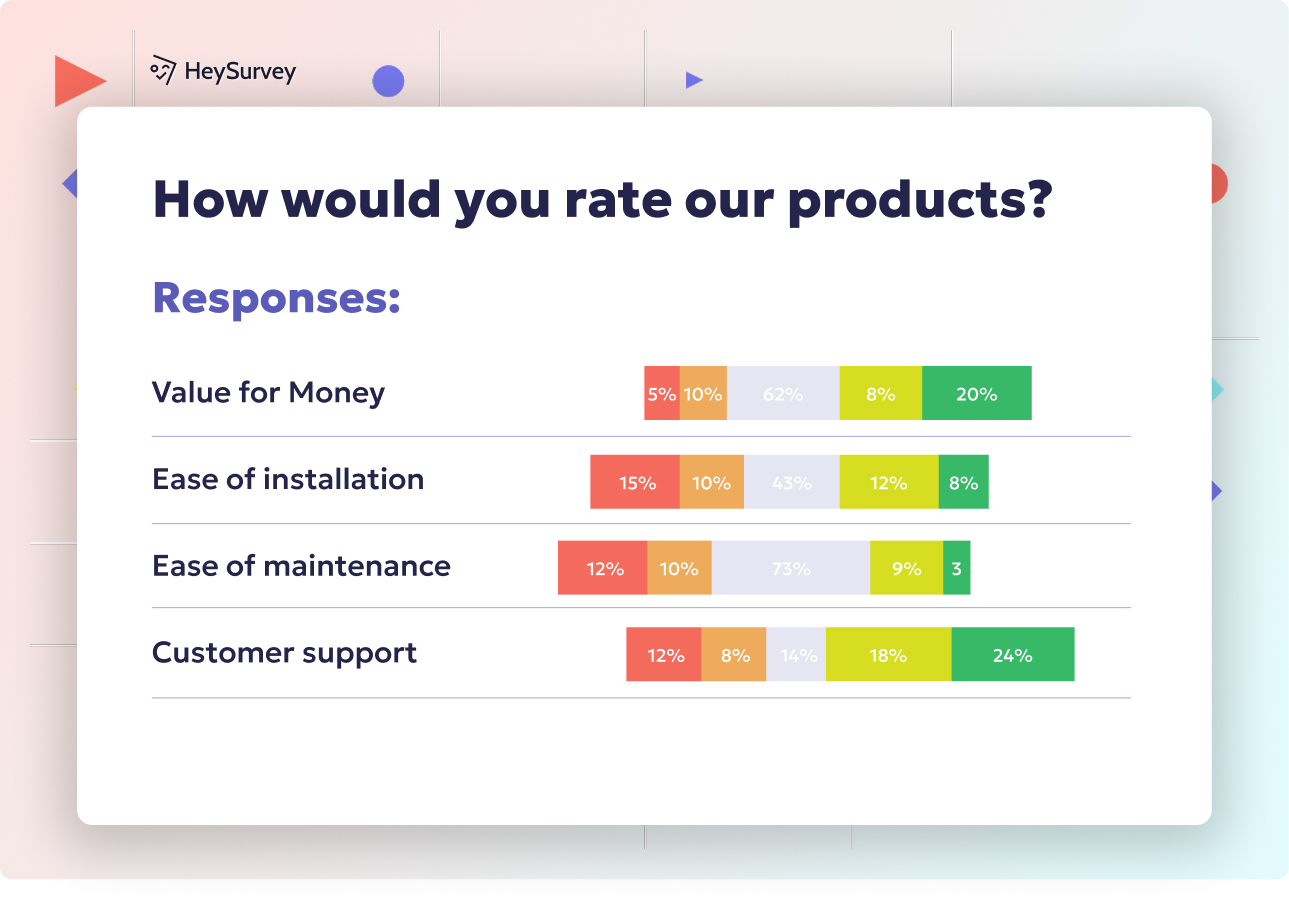
31 Change Readiness Survey Questions to Boost Your Success
Discover 25+ sample change readiness survey questions to assess attitudes, barriers, and confiden...
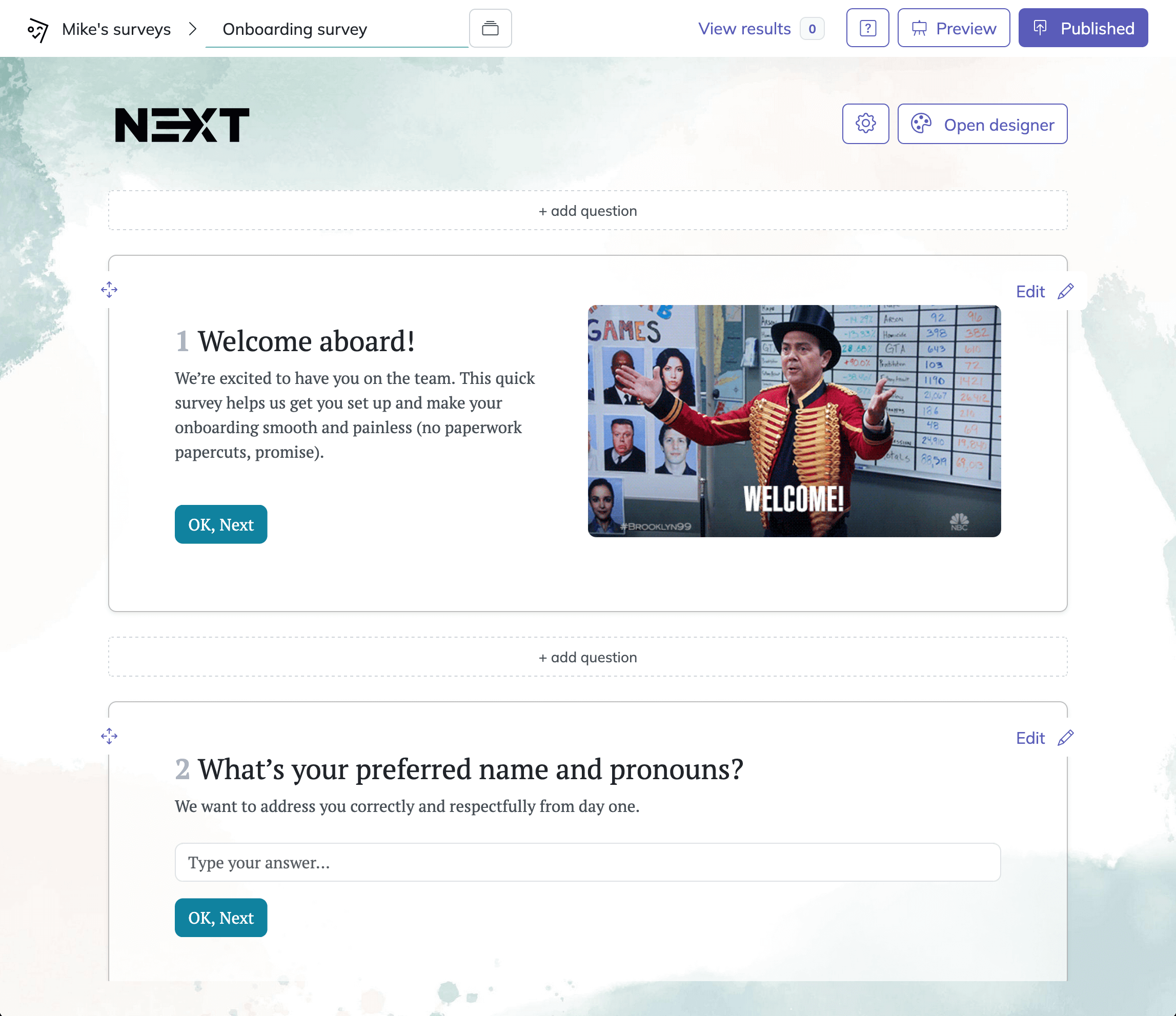
31 Retreat Survey Questions to Collect Actionable Feedback
Discover 26 essential retreat survey questions to gather actionable feedback before, during, and ...

